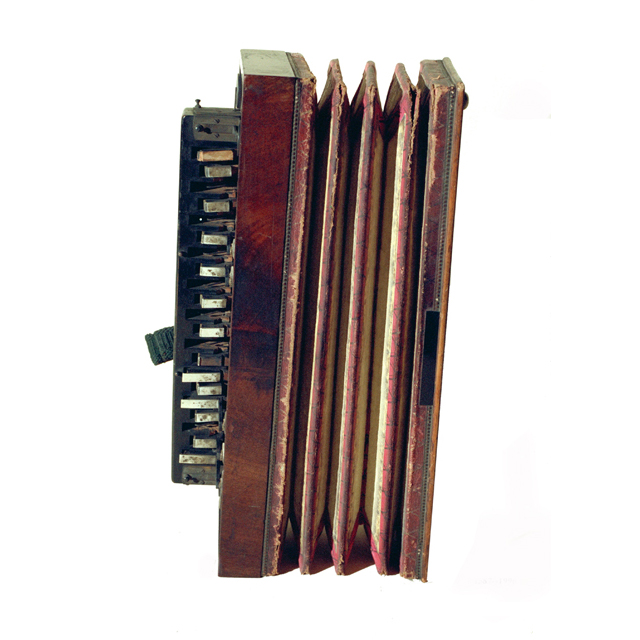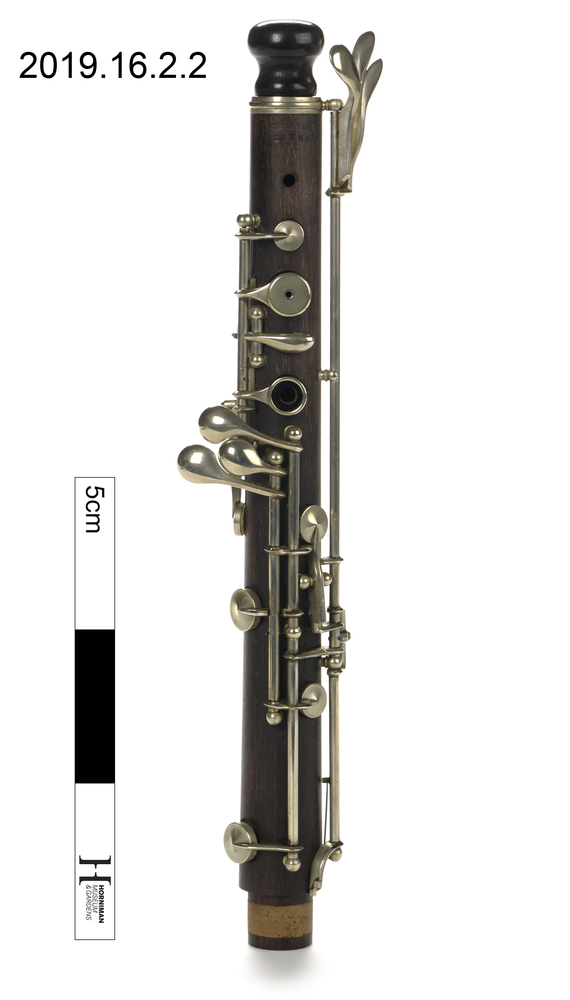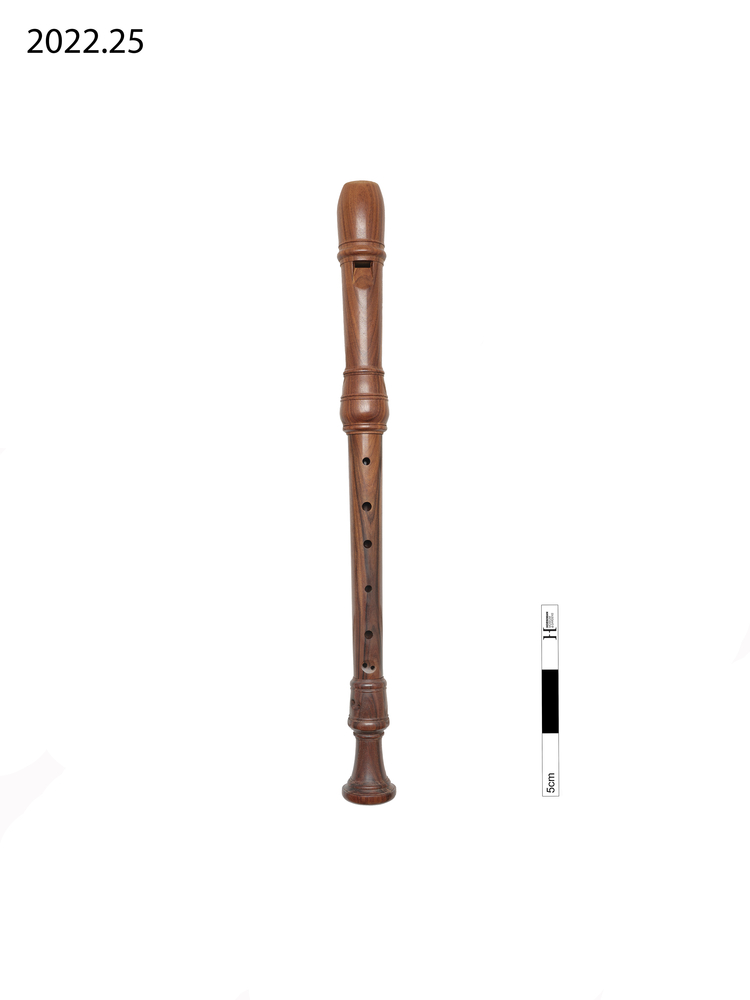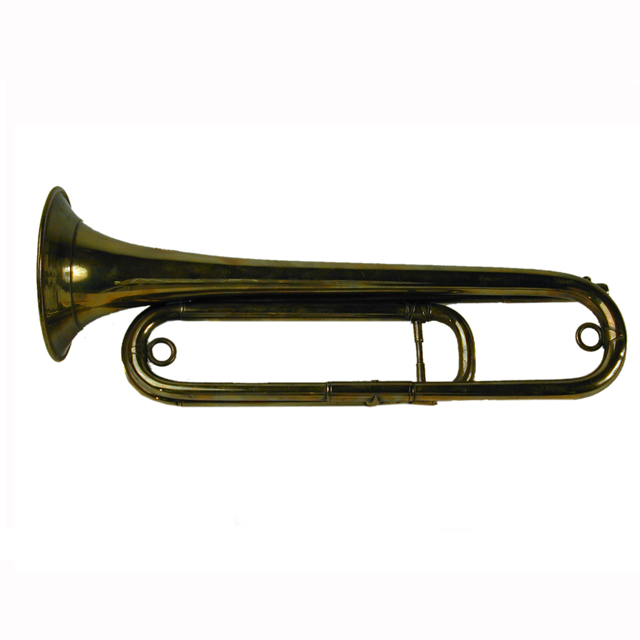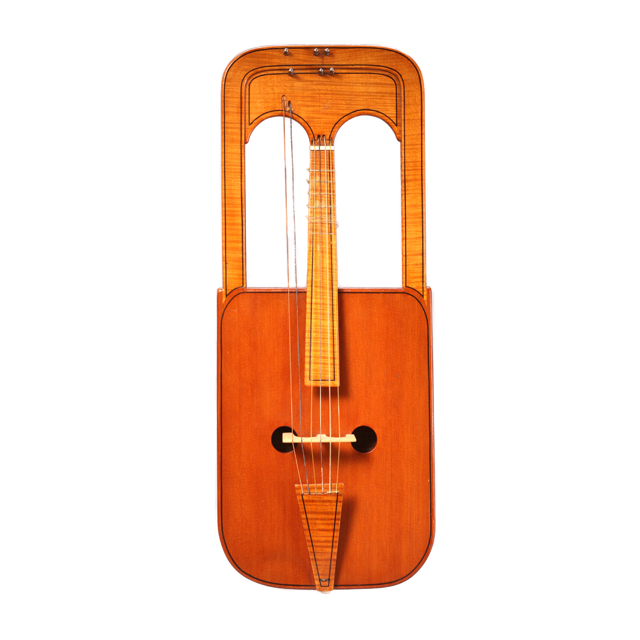
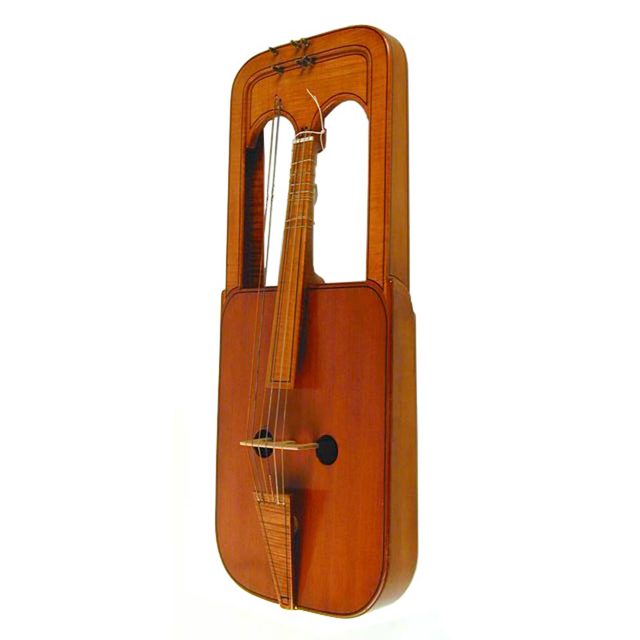
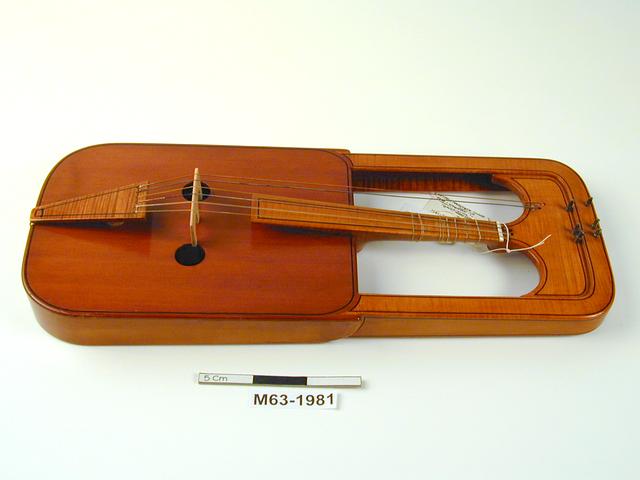
Crwth, bowed lyre. Square sound box, maple back, with two round sound holes on belly either side of the bridge. The left leg of the bridge meets the back of the sound box through the left sound hole. Maple tailpiece with ivory endpin at base of sound box. Supporting arch of maple above the sound box with a central fingerboard also of maple, connecting the arch to the sound box. Ivory nut at top of fingerboard, gut frets. Metal tuning pegs at top of arch. Four fingered strings made of gut and two drones or bourdons made of metal. Simple black purfling around belly, tailpiece, fingerboard and arch.
A revival of an instrument that had died out in the 19th century, this crwth was probably based by Arnold Dolmetsch on an example from Voela in north Wales in the Welsh Folk Museum, Cardiff. At the 1934 Haslemere Festival, one concert included pieces for Celtic harp, played by Mabel Dolmetsch, and crwth played by Arnold Dolmetsch himself. These pieces were based on Dolmetsch's own deciphering of the 'Bardic Penllyn manuscript', now better known as the Robert ap Huw manuscript (B. M. Addl. MS 14905).




